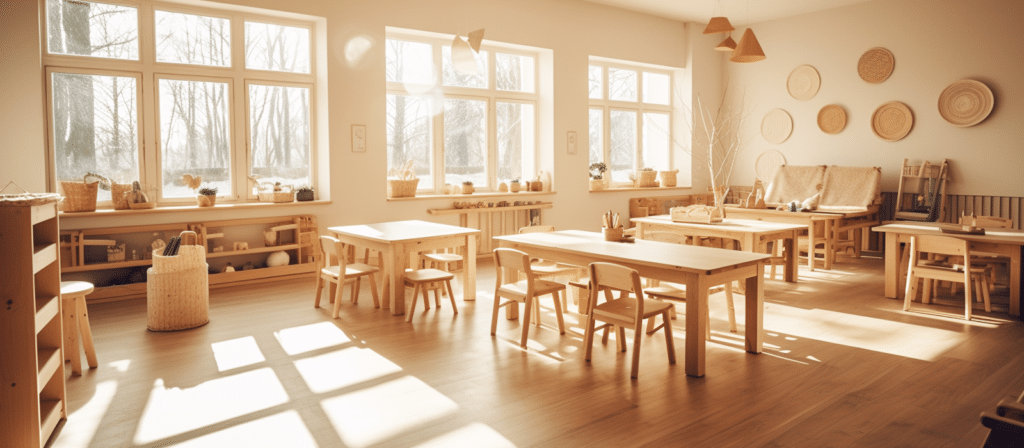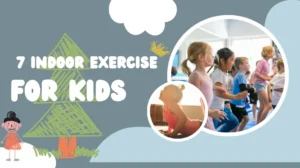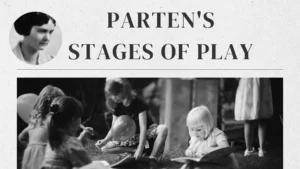When we delve into the concept of softness as a vital aspect of environments designed for young children, we uncover a multitude of elements that significantly impact their experiences within these spaces. As we scrutinized the dimensions that contribute to a child’s interaction with their surroundings, we discerned several key indicators that gauge the level of softness within daycare centers, both indoors and outdoors:
- Comfortable Child-Adult Furnishings: Rockers, plush couches, and stuffed chairs create an inviting ambiance.
- Ample Carpeting or Rugs: Providing a soft foundation for activities and play.
- Natural Elements: The inclusion of grassy areas and sandy spaces fosters tactile engagement.
- Sensory Play Zones: Incorporating areas with sand and dirt for digging and molding.
- Interactive Animals: Friendly furry companions that children can hold and interact with.
- Relaxing Swings: Sling swings offer a soothing experience.
- Exploratory Playdough: Encouraging creativity through hands-on manipulation.
- Messy Creativity: Activities like finger painting, clay sculpting, and water play stimulate sensory exploration.
- Aqua Adventures: Water-based activities that engage the senses.
- Comfy Retreats (“Laps”): Providing spaces for children to sit comfortably.
Central to all these indicators is the concept of sensory responsiveness. Whether it’s the ripple of water, the sway of a swing, or the pliability of a pillow, these elements respond to a child’s touch, offering a dynamic interaction that contrasts with the rigidity of hard surfaces. Softness enables children to employ their bodies freely and creatively; they can shape sand, splash in water, and engage with materials according to their desires.
Unveiling the Impact of Softness
Infusing greater softness into early childhood environments elevates their allure, educational value, and comfort. Moreover, it holds potential for alleviating tension in both children and adults. Sensory responsiveness, a fundamental aspect of leisure environments, plays a pivotal role. Even though full-day daycare may not be deemed purely leisure, the presence of sensory-responsive elements mitigates stress and fatigue that can lead to unwanted behaviors as the day unfolds.
Intriguing solutions to this quandary have surfaced. Often, these solutions involve intensifying the softness factor. For instance, having children remove their shoes before lunch serves as a transition, ushering in a different phase of the day. Additionally, allocating a serene space with rugs and pillows post-morning activities allows for intimate conversations and stories, promoting calmness before meal and naptime.

Balancing Adult and Child Well-being
Remarkably, our observations unveiled that it’s often the adults, rather than the children, who grapple with the latter hours of the day. Following their naps, children are usually brimming with energy. Conversely, adults tend to exhibit fatigue and diminished effectiveness.
Childcare establishments invest substantial effort and resources into designing activities and equipment deemed beneficial for children. Yet, the idea of providing an exceedingly comfortable chair for an adult who has spent an entire day in the environment often goes overlooked.
Similarly, certain centers restrict adults from sitting while children play outside. Nonetheless, outdoor spaces should be secure enough to allow an adult to rest. Just as with the inviting chair indoors, seated adults become more accessible to children, fostering close interactions that standing inhibits.
A Paradigm Shift: From Institution to Home
Does the essence of childcare lean more towards a nurturing home or a formal school? A home serves as a setting that caters to day-to-day needs, a principle that childcare centers might embrace. Envision a center that mirrors a cozy home—a sanctuary furnished with comfy chairs for moments of tranquility, couches for staff respite, and opportunities for children to partake in daily tasks such as laundry and cooking.
Interestingly, individuals effortlessly resonate with the comfort that softness affords, a sentiment often interrupted by the presence of hardness in childcare centers. Administrative considerations, such as cleanliness and efficiency, can overshadow the reasons for softness. Yet, the provision of soft spaces stands as an enduring requirement, enriching the quality of early childhood experiences.

Striking the Right Balance
The dichotomy of softness and hardness encapsulates a dimension of how environments engage their inhabitants, particularly on a tactile level. A well-crafted play environment—one where children exercise autonomy in activity selection—demands a substantial dose of softness to function optimally.
Intriguingly, younger children’s affinity for softness aligns with their developmental needs. Infants, especially, benefit from materials that respond to their exploratory proclivities, counteracting the rigidity inherent in their surroundings. As individuals mature, their capacity to interact with hardness grows. However, an overestimation of this resilience is common, both in work and play settings.
Conclusion
Ultimately, the introduction of softness or hardness determines the extent of an environment’s responsiveness to its inhabitants. In the realm of childcare, where exploration and growth abound, a judicious infusion of softness proves paramount. The tender rapport between children and their surroundings hinges on this delicate balance, fostering an environment where both young and old can flourish.













